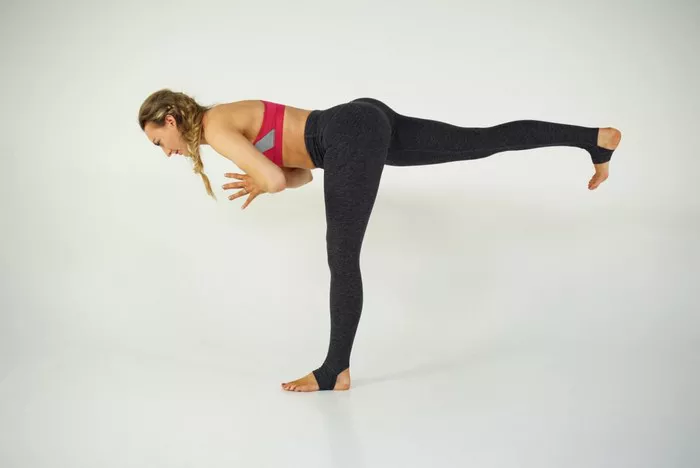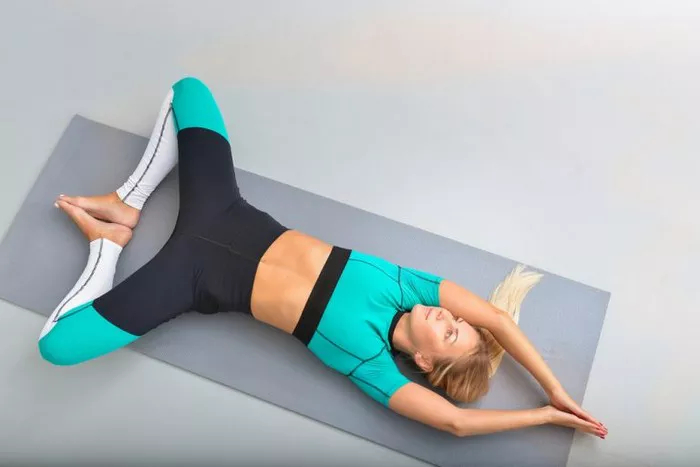Yoga, an ancient practice originating from the Indian subcontinent, encompasses a myriad of poses that not only strengthen the body but also nurture the mind and spirit. Among these poses, the Warrior 3 Pose stands out as a symbol of strength, focus, and balance. In this article, we delve into the origins and symbolism of the Warrior 3 Pose, its physical and mental benefits, variations and modifications, step-by-step instructions for practice, as well as precautions and contraindications.
Origins and Symbolism
The Warrior 3 Pose, also known as Virabhadrasana III in Sanskrit, draws its roots from Hindu mythology. It is named after Virabhadra, a fierce warrior created by Lord Shiva in a fit of rage. Virabhadra was born to avenge the death of Shiva’s beloved wife, Sati. Thus, the pose embodies the qualities of a warrior – strength, determination, and courage.
Symbolically, the Warrior 3 Pose represents the warrior’s ability to focus and remain steadfast amidst challenges. It embodies the balance between effort and ease, as well as the integration of mind, body, and spirit. Practicing this pose encourages practitioners to cultivate inner resilience and face life’s adversities with grace and poise.
Physical and Mental Benefits
The Warrior 3 Pose offers a plethora of physical and mental benefits, making it a valuable addition to any yoga practice:
1. Strengthens the Legs and Core: As the body balances on one leg, the muscles of the standing leg, as well as the core muscles, are engaged to maintain stability. This strengthens the legs, abdomen, and lower back.
2. Improves Balance and Coordination: Balancing in Warrior 3 requires concentration and coordination, which helps improve balance over time. Enhanced balance not only benefits yoga practice but also translates into better stability in daily activities.
3. Increases Focus and Concentration: The focus required to sustain the pose cultivates mental concentration and presence. Practicing Warrior 3 enhances mindfulness and trains the mind to remain focused on the present moment.
4. Stretches the Hamstrings and Spine: The extended leg in Warrior 3 creates a deep stretch along the back of the standing leg and the spine, improving flexibility and relieving tension in these areas.
5. Promotes Confidence and Empowerment: Mastering Warrior 3 builds confidence as practitioners learn to trust their bodies and capabilities. It instills a sense of empowerment, both on and off the mat, as individuals embody the strength and poise of a warrior.
Variations and Modifications
While the traditional Warrior 3 Pose is a challenging balance posture, there are several variations and modifications that cater to practitioners of all levels:
1. Supported Warrior 3: Place a block or sturdy object under the hands for added support and stability, particularly for beginners or those with limited balance.
2. Half Warrior 3: Instead of extending both arms forward, keep one hand on a support, such as a wall or chair, while extending the opposite leg behind. This variation reduces the demand on balance while still providing the benefits of the pose.
3. Bent Knee Warrior 3: Bend the standing leg slightly to decrease the intensity of the pose and alleviate pressure on the lower back and hamstrings.
4. Warrior 3 with Arms Extended to the Sides: Instead of reaching the arms forward, extend them out to the sides, parallel to the floor, to create a T-shape with the body. This variation challenges shoulder stability and strengthens the muscles of the upper back.
5. Warrior 3 with Bound Arms: From the traditional Warrior 3 position, reach the arms behind the back and clasp the hands together in a bound position. This variation opens the chest and shoulders while deepening the stretch in the standing leg.
See Also: Yoga Warrior Poses: 1, 2, and 3
Step-by-Step Instructions
Practice Warrior 3 Pose with these step-by-step instructions to experience its full benefits:
1. Start in Mountain Pose (Tadasana): Stand tall with your feet hip-width apart and arms by your sides. Find a steady gaze point (drishti) in front of you to maintain focus.
2. Shift Weight Onto One Leg: Transfer your weight onto your right leg while grounding through the foot. Engage the muscles of the standing leg to create a stable foundation.
3. Hinge Forward at the Hips: Begin to hinge forward at the hips while simultaneously lifting your left leg behind you. Keep the left leg straight and strong, with toes pointing towards the floor.
4. Extend Arms Forward: Reach your arms forward alongside your ears, palms facing each other. Keep the shoulders relaxed away from the ears and maintain a straight line from fingertips to heel.
5. Find Balance and Stability: Engage your core muscles to help maintain balance as you continue to lengthen through the crown of the head and the extended heel.
6. Hold and Breathe: Hold the pose for 5-10 breaths, maintaining steady breath and focus. Keep the gaze steady on your drishti to help center the mind.
7. Release with Control: To release, slowly lower the lifted leg back to the floor and return to Mountain Pose. Take a moment to observe the effects of the pose on your body and mind.
Precautions and Contraindications
While Warrior 3 Pose offers numerous benefits, it may not be suitable for everyone. Practitioners with the following conditions should approach the pose with caution or avoid it altogether:
1. Recent or Chronic Injury: Individuals with ankle, knee, hip, or lower back injuries should avoid or modify Warrior 3 to prevent exacerbating their condition.
2. High Blood Pressure: As the pose involves a forward fold, individuals with uncontrolled high blood pressure should practice with caution to avoid a sudden increase in blood pressure.
3. Vertigo or Dizziness: Balancing poses like Warrior 3 may exacerbate feelings of dizziness or vertigo in some individuals. Those prone to these sensations should practice near a wall for support or opt for a modified variation.
4. Pregnancy: Pregnant individuals should avoid intense balancing poses like Warrior 3, especially in the later stages of pregnancy. Modifications, such as practicing with support or reducing the duration of the pose, may be more suitable.
5. Low Bone Density: Individuals with osteoporosis or low bone density should exercise caution when practicing weight-bearing poses like Warrior 3 to avoid the risk of fractures. Modified versions with support may be safer alternatives.
Conclusion
In conclusion, the Warrior 3 Pose serves as a powerful tool for cultivating physical strength, mental focus, and inner resilience. By exploring its origins, benefits, variations, and precautions, practitioners can approach this pose with mindfulness and intention, harnessing its transformative potential on and off the yoga mat. As with any yoga practice, it is essential to listen to your body, honor its limitations, and seek guidance from a qualified yoga instructor if needed. Through consistent practice and mindful awareness, the journey of the warrior unfolds, paving the way for growth, balance, and empowerment.
























